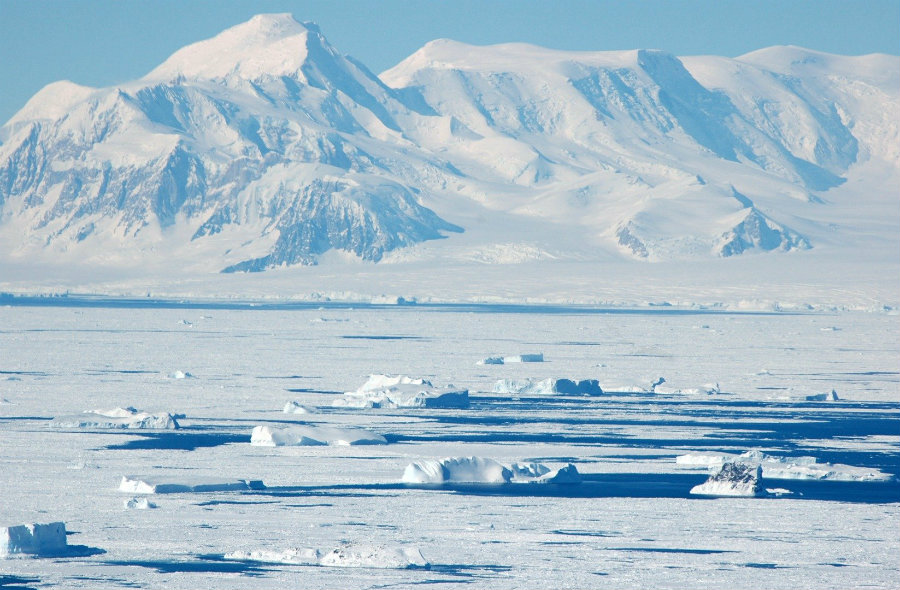Almost a hundred volcanoes were found covered under a large amount of snow in Antarctica, according to scientists. With the already-known 41 volcanoes, the area has become the largest volcano zone in the world due to the discovery of these 91 volcanoes.
This now represents a new risk for the global ice melting, which is already occurring thanks to climate change.

The volcanoes, as high as the Eiger of almost 4,000 meters in Switzerland, were found under a 3.5-kilometer sheet of snow in West Antarctica, according to researchers.
Now the largest volcano zone in West Antarctica
According to research released in a special Geological Society publication, the West Antarctic Rift System – a 2,200-mile-long (3,500 km) area that extends from the Antarctica’s Ross Ice Shelf to the Antarctic Peninsula – hides 91 volcanoes under a long distance ice sheet, buried as deep as two miles. They range in size from 325 to 12,600 feet (100-3,850 meters). In addition to the other 41 volcanoes, the zone has become in the largest on Earth.
The concentration of volcanoes is now known for being bigger than East Africa’s volcanic ridge and the densest in all the planet’s surface, according to the scientists who conducted the study, Max Van Wyk de Vries and Robert Bingham from the School of GeoSciences at the University of Edinburgh. Of course, other scientists are rejecting this statement because of the possible unknown existence of other hidden volcanoes.
The discovery is attributed to Max, who’s a third-year undergrad. He saw possible traces of volcano activity on Antarctica’s radars maps that are available for all the public and proceeded with an expedition. After it began, he found hidden peaks of basalt rock, which are usually related to volcano’s top side. They continued making the proper analysis, and compared the findings with satellite and database records, along with geological information from aerial surveys.
“Antarctica remains among the least studied areas of the globe, and as a young scientist I was excited to learn about something new and not well understood,” said de Vries in a statement. “After examining existing data on West Antarctica, I began discovering traces of volcanism. Naturally I looked into it further, which led to this discovery of almost 100 volcanoes under the ice sheet.”
New warnings came from scientists after discovering the volcanoes
The world is already on warning due to climate change and global heat. Now, these volcanoes represent another threat for ice melting.
Washington University researchers are not entirely sure of what would happen if the volcanoes erupted, although it is most likely the magma never reaches to the top. However, the magma could also break rock volcano-walls, and it would create new paths within the ice. Thus, reaching to the bottom and immediately melting it.
“This is a major step forward in understanding solid Earth processes beneath the Antarctic ice sheet,” said Mike Coffin, a researcher at the University of Tasmania’s Institute for Marine and Antarctic Studies (IMAS), who also find admirable and fascinating the results of the investigation. “Combining different data types—magnetic, gravity, and satellite imagery—with a digital elevation model and existing volcano databases has proven extremely fruitful, and the work will sow the seeds for much future research on Antarctica.”
Source: Gizmodo
